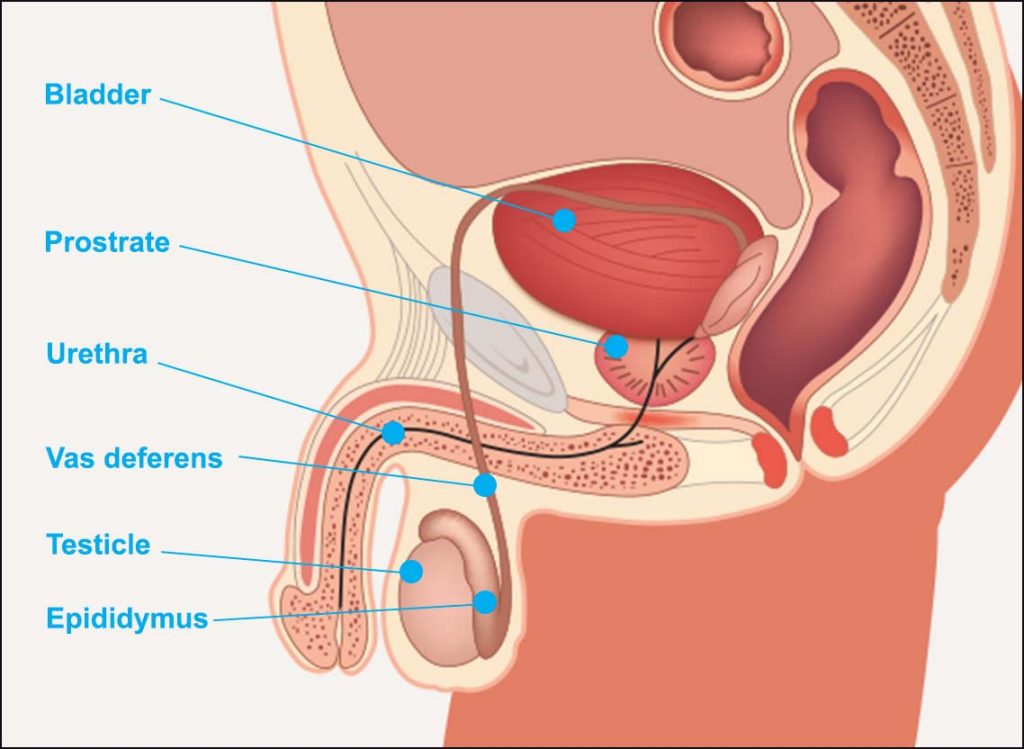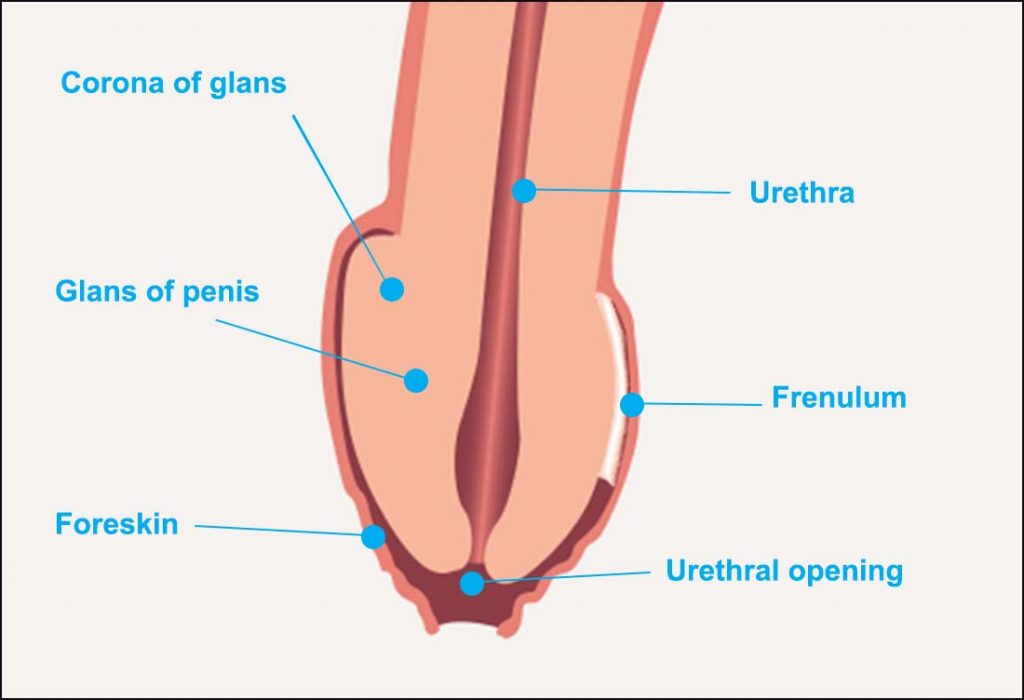Service & Advice
For Men.
Confidential Tests
& Treatments
Service & Advice
For Men.
Confidential Tests
& Treatments
Service & Advice
For Men.
Confidential Tests
& Treatments
Service & Advice
For Men.
Confidential Tests
& Treatments
Service & Advice
For Men.
Confidential Tests
& Treatments
Service & Advice
For Men.
Confidential Tests
& Treatments
Service & Advice
For Men.
Confidential Tests
& Treatments
Service & Advice
For Men.
Confidential Tests
& Treatments
Men’s Health
Men’s reproductive anatomy
The organs and structures of the male reproductive system give men the ability to fertilise a woman’s egg (ovum) to produce a baby. Several different organs and structures make up the male reproductive system.
Below are the names and meaning of a man’s reproductive system, along with some key terms related to men’s health.

The scrotum
This is the loose skin which hangs under the main body cavity between the upper thighs. It is divided into two, and each side contains one testicle (testis).
The testicles
There are two testes. Each is an egg-shaped structure located in the scrotum. The testes produce sperm and also produce male hormones. Because they are outside the main body cavity the testes are slightly cooler. This difference in temperature helps sperm production.
The foreskin
When the penis is soft, the foreskin is the fold of skin that covers the head of the penis. When the penis is hard, the foreskin retracts and exposes the head of the penis.
Some men have a foreskin long enough to cover the head of their penis even during an erection.
Some men find that they have a tight foreskin, which does not easily roll back over the head of the penis when they have an erection.This can be painful or uncomfortable. This is known as phimosis.
If this isn’t causing you a problem then there’s nothing to worry about, but sometimes it can cause symptoms including redness, swelling and discharge, which can lead to balanitis (inflammation of the head of the penis or ‘glans’).
A tight foreskin can also be associated with sexually transmitted infections or other skin conditions such as eczema or psoriasis.
If you notice any of these symptoms or are concerned, then seek advice from one of our doctors or nurses.
If you can pull your foreskin back and it gets stuck and won’t retract (paraphimosis) you should go to A&E.
The epididymis
This is the tube attached to the testis where sperm is stored.
The vas deferens
This is the tube which carries the sperm from the epididymis. It meets a tube from the seminal vesicle (see below) to form a short tube called the ejaculatory duct. This then opens into the urethra, which is the tube that takes the sperm outside the body.
The urethra
This is the tube which passes from the bladder down the penis to the outside. It carries both urine and semen.
Size and shape
Many men worry about the size of their penis. Some feel self-conscious and believe theirs is ‘too small’. This is usually because some men exaggerate the size of their penis.
Generally the adult penis size is about 2.5 to 4 inches (6 to 10cm) when soft, and 5 to 7 inches when erect (13 to 18cm).
The average girth (all the way around) when erect is approximately 4.7 to 5.1 inches (12 to 13cm). When flaccid (soft) the length of a penis can also vary depending on other factors such as temperature.
The size of your penis has no bearing on how you perform at sex. All penises vary in their look and size. It’s how you use it that makes the difference.
When erect, penises have a habit of appearing even more different and will often curve up, down, or curve to the left or right. This can be completely normal.
During puberty, usually between the ages of 11 and 18, the penis and testicles will grow, however they don’t stop growing completely until around 21 years old.
The accessory sex glands
- The seminal vesicles
- The prostate gland, which lies just beneath the bladder. It is normally about the size of a chestnut
- The bulbourethral glands
The penis
The penis has a single tube in it called the urethra. There are three main parts of the penis – the base, body and glans.
The base is the part attached to the skin at the top of the scrotum.
The body of the penis is made up of a spongy type of tissue which swells when blood enters during an erection.
The glans penis is the slightly larger area towards the end of the penis and contains the opening of the urethra.

Circumcision
Men are born with a foreskin but some are circumcised, usually as babies. This is the surgical removal of some or the entire foreskin and is usually carried out for a variety of reasons, including religious beliefs.
A circumcised penis will no longer have a foreskin covering the head. Sometimes it is necessary for circumcision to be carried out as an adult for many reasons.
Masturbation
This is often known as ‘wanking’. It is stimulating yourself for sexual pleasure. Often it is the best way to get to know your body and become aware of what is pleasurable and fun for you. This helps you let others know how they can please you, when you become intimate.
There are lots of myths about masturbation but it’s normal to masturbate often or little, or even not at all!
Keeping clean
The penis and genital area should ideally be washed every day with warm water. Make sure if you have a foreskin, to bring this back and wash around the head (glans) also. If the genital area, in particular the glans, isn’t kept clean, you may notice a build-up of ‘smegma’ (yellowish creamy substance).
Smegma is a natural lubricant that keeps your penis moist. However, too much of this and it can be quite smelly and look unpleasant. If left, it can cause irritation and possibly lead to balanitis.
You might like to use some unperfumed soap or shower gel (to avoid irritation), to help wash away the smegma. Once it goes, make sure you wash under your foreskin every day, to avoid smegma building up again.
To book an appointment please call
020 8887 4510
Our booking lines are open:
Monday – Friday: 8:00 – 16:00
AIDS & HIV
If you have been diagnosed with HIV or would like to be screened, we are here to help. Our services include HIV prevention, support, tests and treatment.











